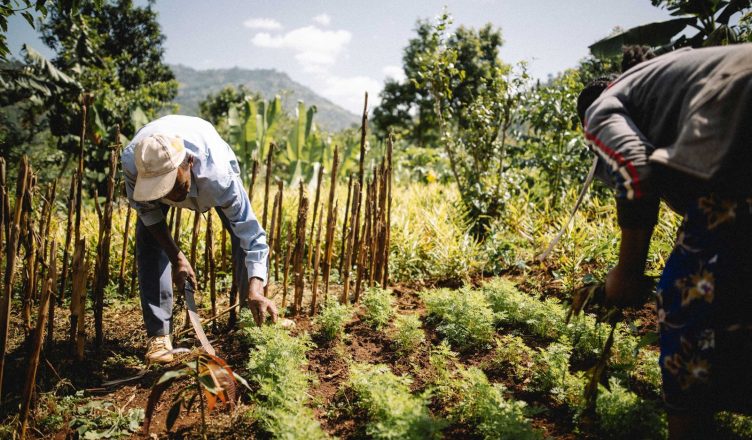Let’s be honest. When you hear “regenerative agriculture,” you probably picture a farmer in a field, right? Well, that’s part of it—a crucial part. But the business landscape blooming around this movement is so much bigger and more diverse. It’s a whole new economic ecosystem.
This isn’t just about being “less bad” for the planet. Regenerative ag is about being actively good. It rebuilds soil, enhances biodiversity, and improves water cycles. And from that fertile ground, some seriously smart business opportunities are sprouting. Let’s dig in.
The Core Opportunity: The Farm Itself
Okay, sure, we have to start here. But even the traditional farm model is being turned on its head.
Diversified Crop and Livestock Systems
Monoculture is out. Polyculture is in. This is the practice of growing multiple crop species together. It’s like a investment portfolio for your land—it spreads risk and can actually increase resilience. Think beyond corn and soy. We’re talking about:
- Specialty Grains: Kernza, a perennial grain, is a rockstar here. Its deep roots sequester carbon like crazy.
- Regenerative Organic Vegetables: High-value produce grown with no-till methods and complex cover crops commands a premium.
- Integrated Livestock: This is a big one. Managed grazing of cattle, sheep, or chickens on pasture doesn’t just produce meat; it stimulates grass growth, deposits manure, and builds soil health. It’s a closed-loop system.
Carbon Farming: Getting Paid for Stewardship
This is perhaps the most talked-about opportunity. Farms that implement regenerative practices can sequester carbon dioxide from the atmosphere into their soil. Through emerging carbon credit markets, they can then sell that carbon as a verified credit to companies looking to offset their emissions.
It’s not simple, mind you. You need to measure, report, and verify the results. But it represents a powerful shift: the farm as a climate solution, and that solution has a tangible market value.
Beyond the Fence Line: The Support Ecosystem
This is where things get really interesting for entrepreneurs who don’t necessarily want to own a tractor. The regenerative movement needs a whole support crew.
Consulting and Implementation Services
Transitioning from conventional to regenerative farming is a massive mindset and operational shift. Farmers need guides. This creates a huge demand for:
- Regenerative Agronomists: The soil doctors who can design diverse crop rotations and soil health plans.
- Grazing Specialists: Experts who can help design and manage intensive rotational grazing systems.
- Financial Planners: Professionals who understand the unique cash-flow challenges of a farm in transition and can help them access green loans or grants.
Technology and Monitoring
Regen ag is low-tech in philosophy, but smart tech is a powerful ally. We’re seeing a surge in AgTech startups focused on:
- Soil carbon measurement using remote sensors and AI.
- Satellite imagery to monitor plant health and cover crop performance.
- Farm management software tailored for complex, multi-species operations.
Input Supply and Manufacturing
The old model of selling synthetic fertilizers and pesticides is, well, getting old. The new model is about biologicals. Opportunities abound for companies producing:
- Inoculants and bio-fertilizers.
- Equipment for no-till drilling and roller-crimping cover crops.
- Sources for diverse cover crop seed mixes—not just rye and clover.
The Value-Add and Market-Making Wave
You’ve grown the food regeneratively. Now what? Getting it to a consumer who understands and is willing to pay for its value is the next critical link.
Branded Consumer Goods
This is a goldmine. Consumers are increasingly voting with their wallets for brands that align with their values. We’re not just talking about carrots here. Think about:
- Regenerative Pasta: Made from Kernza or regeneratively-grown wheat.
- Grass-Fed Meat Snacks: Jerky and sticks from 100% grass-fed, regeneratively grazed livestock.
- Regenerative Chocolate and Coffee: Yes, it’s happening. These are perennial crops grown in agroforestry systems that mimic nature.
The story behind these products is their superpower. It’s not just “no antibiotics,” it’s “this product helps heal the planet.”
Supply Chain Aggregation and Distribution
A single farm might not be able to supply a national grocery chain. But a co-op or a dedicated distributor that aggregates products from multiple regenerative farms can. This is a massive logistical business opportunity—connecting the right farms with the right buyers, and ensuring the story and integrity remain intact.
Education and Experiences
People are hungry for connection—to their food and to the land. This opens up avenues like:
- Farm Tours and Agri-Tourism: Charge for the experience of seeing a regenerative operation in action.
- Workshops and Courses: Teach everything from soil health fundamentals to holistic management.
- On-Farm Restaurants: The ultimate farm-to-table, where the “table” is right there on the farm.
Navigating the Challenges (Let’s Be Real)
It’s not all sunshine and green pastures. The transition to a regenerative model has its hurdles. The upfront costs can be daunting. The learning curve is steep. And the markets, while growing, are still nascent. You know, building a new system within the shell of the old one is never easy.
But that’s also where the opportunity lies. The pioneers who figure out the financing, the supply chains, and the consumer messaging? They’ll be the ones defining the next era of agriculture.
The Bottom Line is Healthier Soil
At the end of the day, every single one of these regenerative agriculture business opportunities shares a common foundation: the health of the soil. It’s the ultimate asset. A business that actively improves that asset isn’t just extracting value; it’s creating it—for the farmer, the consumer, the community, and the climate.
This is more than a niche. It’s a fundamental re-imagining of our relationship with land and food. And that, honestly, might be the biggest opportunity of all.

